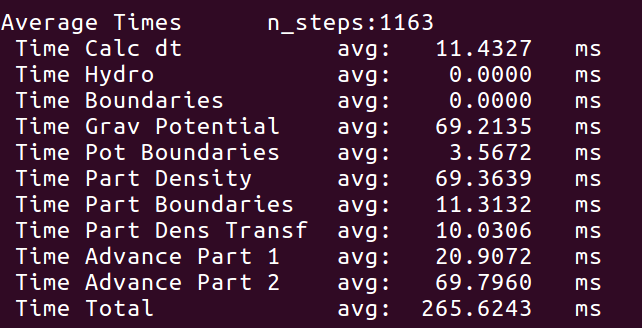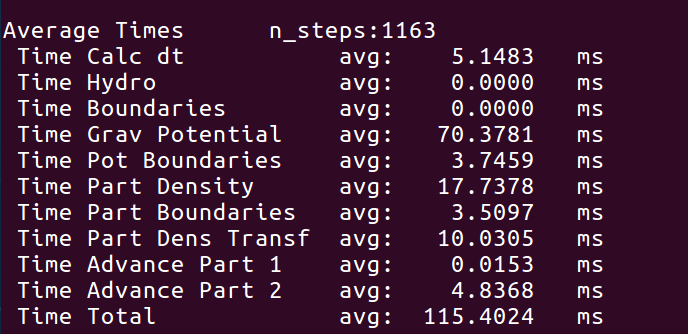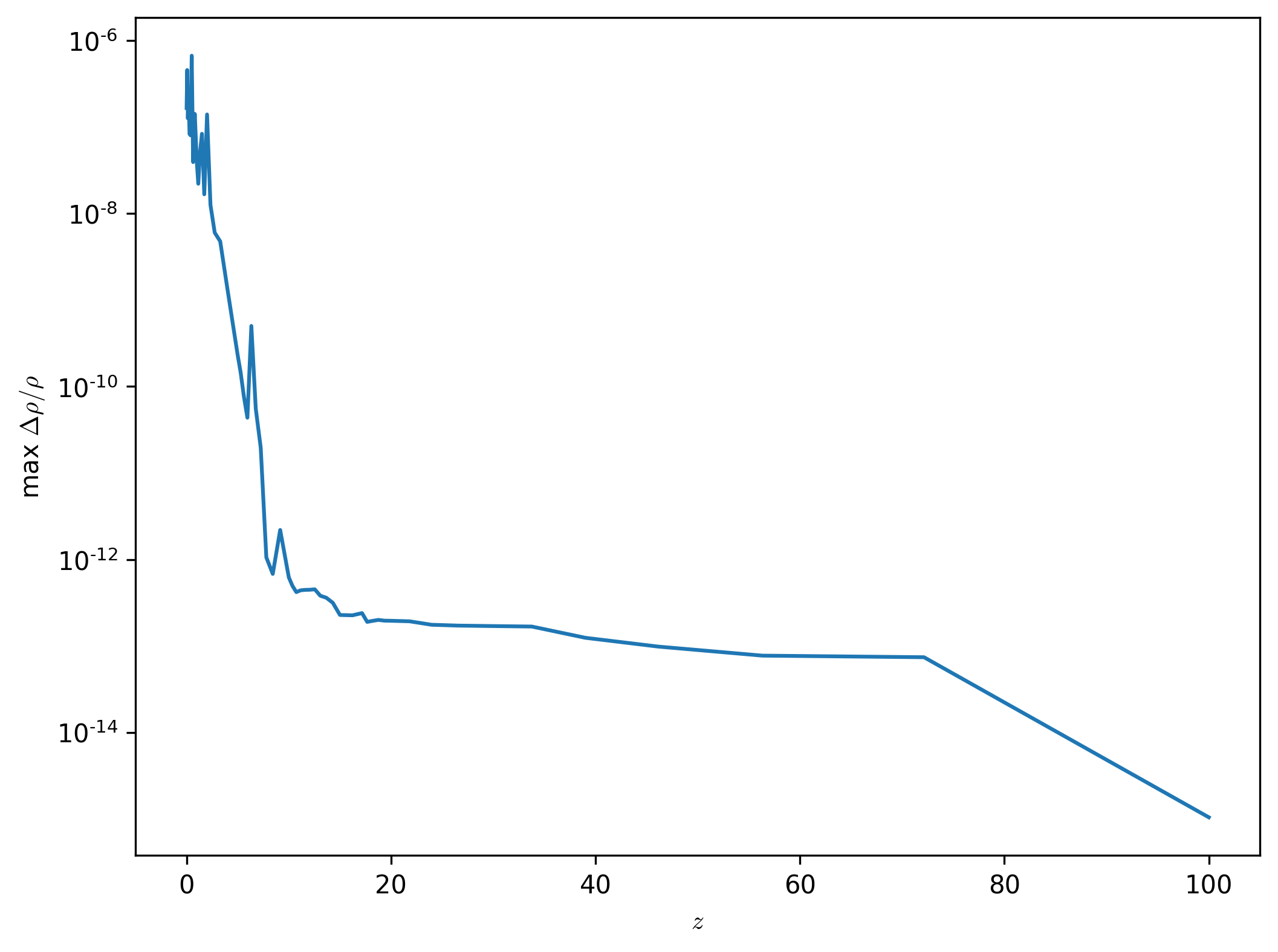Particles timing CPU vs. GPU
The comparison is for a \(256^3\) dark matter simulation run in 8 GPUs and using the PARIS Poisson solver.
Below are the times of each of the main steps for the PARTICLES_CPU simulation, also most of the particles steps use 10 OMP threads each:

Now below are the times of each of the main steps for the PARTICLES_GPU simulation:

Wiout counting the time for the Poisson solver (Time Grav Potential), the time for the potential boundaries transfer (Time Pot Boundaries) and the time for the particles density boundaries transfer (Time Part Dens Transf) the total times of the CPU and GPU particles iteration is;
Time Particles CPU = 182.8 ms
Time Particles CPU = 31.868 ms
For this test the GPU version is ~5.7 times faster!
Below I compare the difference in the DM density from both simulation the max[abs(\(\Delta \rho / \rho\))] as a function of redshift is shown below:

and the mean[abs(\(\Delta \rho / \rho\))] as a function of redshift is shown below:
